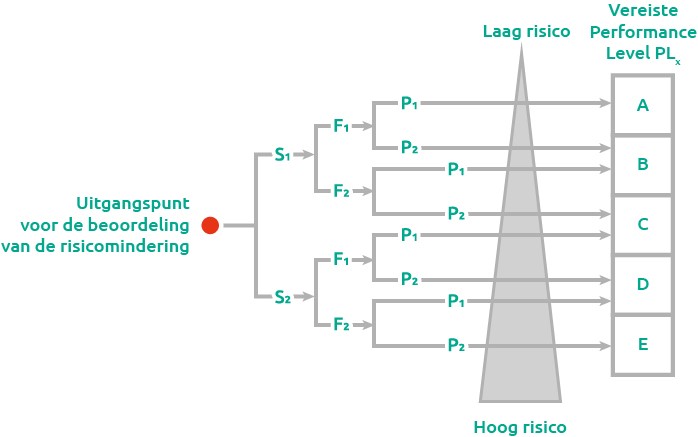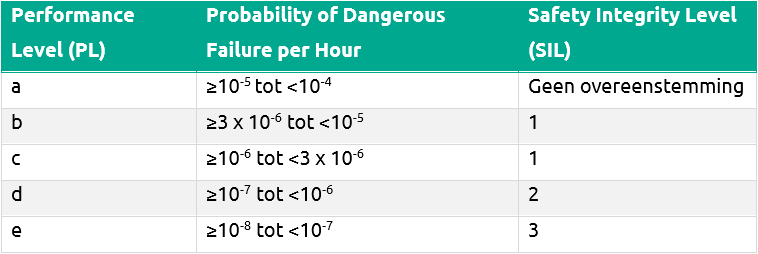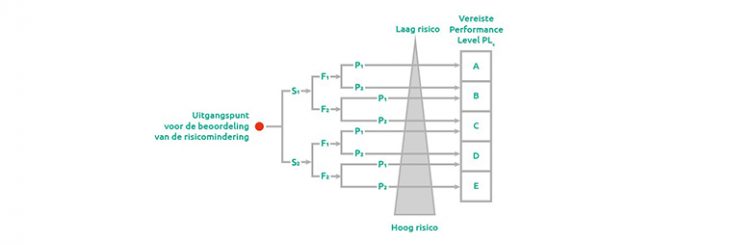Safety Integrity Level (SIL)
SIL stands for Safety Integrity Level (EN-IEC 62061) and is part of Functional Safety. SIL is a method for assessing electrical, electronic, and programmable electronic systems, referring to the quantification of risk reduction in systems. SIL is classified into four levels: SIL 1, 2, 3, and 4 (which is rare). Each level corresponds to a certain degree of risk that the system may fail. The probability of this happening and the impact of system failures together define the risk. The required SIL certification for a system depends on the application (probability of failure and its impact). A higher SIL level is not always better. For example, the risk associated with SIL level 3 may not be relevant to the specific application. Additionally, investing in a higher SIL level is not always realistic.
Performance Level (PL)
PL stands for Performance Level (EN-ISO 13849). The PL indicates the extent to which a control system can perform a safety function. There are five Performance Levels, ranging from a (lowest) to e (highest). To determine the required PL, a risk graph with several steps is used:
- Severity of injury
- S1: Minor injury
- S2: Severe injury
- Frequency/duration of exposure to danger
- F1: Seldom to less frequent, and/or exposure time is short
- F2: Frequent to continuous, and/or exposure time is long
- Possibility of avoiding danger
- P1: Avoiding danger is possible under certain conditions
- P2: Avoiding danger is not (or hardly) possible

Figure 1. Risk graph for determining the Performance Level
Safety Integrity Level (SIL) and Performance Level (PL)
SIL can, in many ways, be compared to PL, despite the fact that SIL has four levels and PL has five levels. When both SIL and PL are integrated into one table, it would look approximately as follows*:



